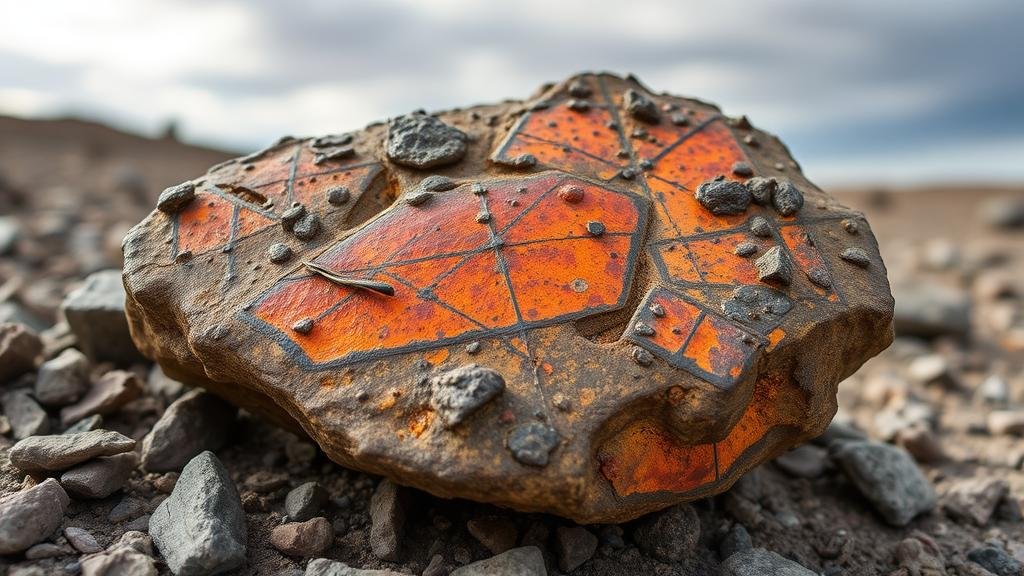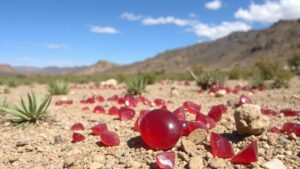Investigating stony-iron meteorites in Argentina’s Campo del Cielo, a famous impact site.
Investigating Stony-Iron Meteorites in Argentina’s Campo del Cielo
Cambio del Cielo, located in the Chaco Province of Argentina, is one of the most significant meteorite impact sites on Earth. Known for its rich array of stony-iron meteorites, this site provides invaluable insights into the composition of celestial objects. For rockhounds and mineral collectors, exploring this area can lead to remarkable finds and a deeper understanding of meteoritics.
Understanding Stony-Iron Meteorites
Stony-iron meteorites are unique as they consist of a combination of silicate minerals and metallic iron-nickel. This category can be divided into two main types: mesosiderites and pallasites. Mesosiderites typically contain a mixture of metal and silicate minerals, while pallasites are characterized by olivine crystals set in a nickel-iron matrix. Their distinctive properties make them highly sought after by collectors.
The Campo del Cielo Impact Event
Campo del Cielo translates to Field of Heaven, aptly named after the significant meteorite shower that occurred approximately 4,000 to 5,000 years ago. This event is believed to have resulted from the breakup of a large asteroid. The area is home to over 100 meteorite fragments, with some weighing hundreds of kilograms, making it one of the largest meteorite fields on the planet.
Scientific Data and Measurements
The collected stony-iron meteorites from Campo del Cielo exhibit a unique composition that holds scientific value. Key data points include:
- Average Composition: The stony-iron meteorites from this site contain approximately 90% metallic iron-nickel and 10% silicate minerals.
- Isotopic Analysis: Trace elements such as germanium (Ge), gallium (Ga), and iridium (Ir) provide insights into cosmic events and the formation of the solar system.
- Dimensions: The largest known meteorite from Campo del Cielo, known as El Chaco, weighs about 37,000 kg (over 81,000 lbs) and measures approximately 4 meters in length.
Collecting Stony-Iron Meteorites
For rockhounds and mineral collectors, Campo del Cielo offers opportunities to collect these fascinating specimens. But, there are important guidelines to follow:
- Legal Considerations: Ensure you are familiar with Argentine laws regarding meteorite collection. Some areas may require permits or have restrictions.
- Field Identification: Recognizing stony-iron meteorites can enhance your collection. Look for metallic luster, irregular shapes, and a specific weight that feels more substantial than typical rocks.
- Proper Equipment: Carry tools such as a rock hammer, chisels, and a scale for accurate weight measurement of specimens collected.
Real-World Applications and Significance
Stony-iron meteorites from Campo del Cielo are not just collection pieces; they have practical applications in scientific research. Studies of their isotopic composition contribute to our understanding of the solar systems history, including the processes that formed planets and asteroids. Also, advancements in material science often look at the unique properties of these meteorites for potential industrial applications.
Actionable Takeaways for Collectors
For those wanting to pursue collecting stony-iron meteorites from Campo del Cielo, here are some actionable takeaways:
- Conduct thorough research on the region, study maps of known impact sites, and visit local museums or geological surveys.
- Network with local rockhounding clubs or organizations to gain insights on the best sites and recent discoveries.
- Document your findings, including photographs and weights, to help build your collection’s provenance.
Conclusion
Investigating stony-iron meteorites in Argentina’s Campo del Cielo is a rewarding venture for rockhounds and mineral collectors alike. By understanding the scientific significance, legal considerations, and practical collection methods, enthusiasts can truly appreciate the beauty and history encapsulated within these celestial fragments.


